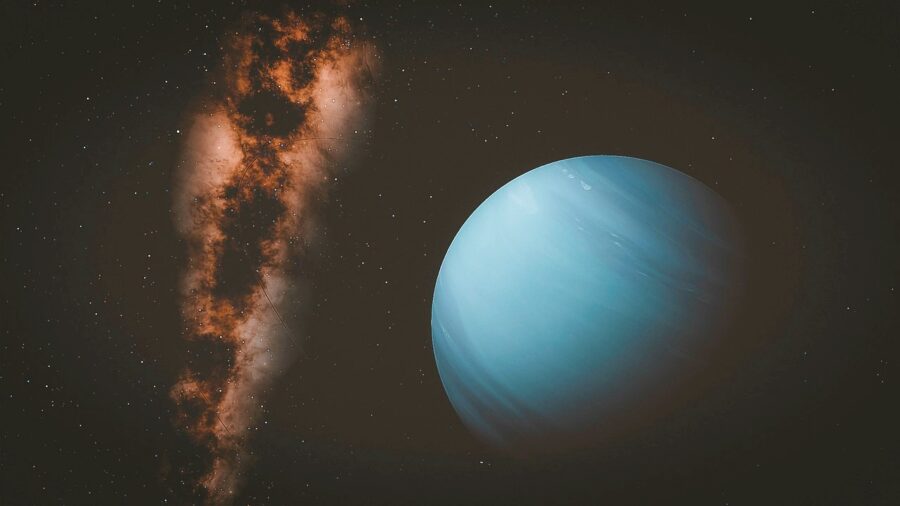Scientists Witness Mysterious Vortex On Nearby Planet, Is Earth In Danger?

As telescope technology continues to evolve and improve, scientists are able to more meticulously research planets like Neptune from Earth with more clarity than ever before. Thanks to the Very Large Telescope’s Multi Unit Spectroscopic Explorer (MUSE), astronomer Patrick Irwin of the University of Oxford has been able to get a closer look at Neptune, and uncover the mysteries of the mysterious dark spots he’s been fascinated with since they were discovered by Voyager 2 in 1989.
According to Science Alert, Irwin and his team have been able to verify with a certain level of confidence that the dark spots we’re seeing on the ice giant are the result of unique anticyclonic vortex activity beneath the ice giant’s atmosphere, and for the first time ever these images have been recorded using reflection spectrum technology.
Scientists have discovered vortex activity on Neptune.
By breaking up the various wavelengths of light through the use of MUSE, Irwin and his team were able to create a 3D reconstruction of the planet, and figure out the exact altitude of the mysterious vortex. This discovery has been a long time coming, and has been made possible through the use of the Very Large Telescope, which has less limitations than the Hubble Space Telescope.
We’re able to take a more granular look at Neptune’s atmosphere and learn more about these mysterious storms for the first time.
The dark spot in the center of the vortex may be the result of vaporized hydrogen sulfide ice, which is brought about by local heating deep within the vortex, causing the dark spot that has been until now shrouded in mystery.
What makes the vortex activity on Neptune unique compared to planets like Jupiter and Saturn is the fact that the storms are relatively short-lived, and have a different cloud structure compared the storms that we’re familiar with on other celestial bodies.

Unlike Jupiter and Saturn, the storm vortices on Neptune have considerably less cloud activity in their centers, but rather boast clouds around the edges of the vortex. Researchers have reason to believe that these clouds are probably the result of methane gas freezing as it’s lifted up from lower altitudes by the vortex.
As the current research dictates, the dark spot in the center of the vortex may be the result of vaporized hydrogen sulfide ice, which is brought about by local heating deep within the vortex, causing the dark spot that has been until now shrouded in mystery. In addition to the methane clouds surrounding the vortex, an entirely new kind of bright cloud formation was discovered at the same altitude as the vortex.
Now that we’re able to study Neptune’s dark spots more closely, and from a more practical vantage point, scientists are hard at work in their quest for answers about not only our own solar system, but also the rest of the known universe.
Being that this is the first time that researchers have been able to study vortex activity on Neptune from Earth rather than relying on a spacecraft like the Voyager, more research has to be conducted to confirm any suspicions that we currently have.
But now that we’re able to study Neptune’s dark spots more closely, and from a more practical vantage point, scientists are hard at work in their quest for answers about not only our own solar system, but also the rest of the known universe.
Today we’re breaking down vortex activity on Neptune, but through the use of more advanced ground-based observation methods, there’s no telling what mysteries about Neptune, and the rest of our solar system have yet to be seen and solved.












